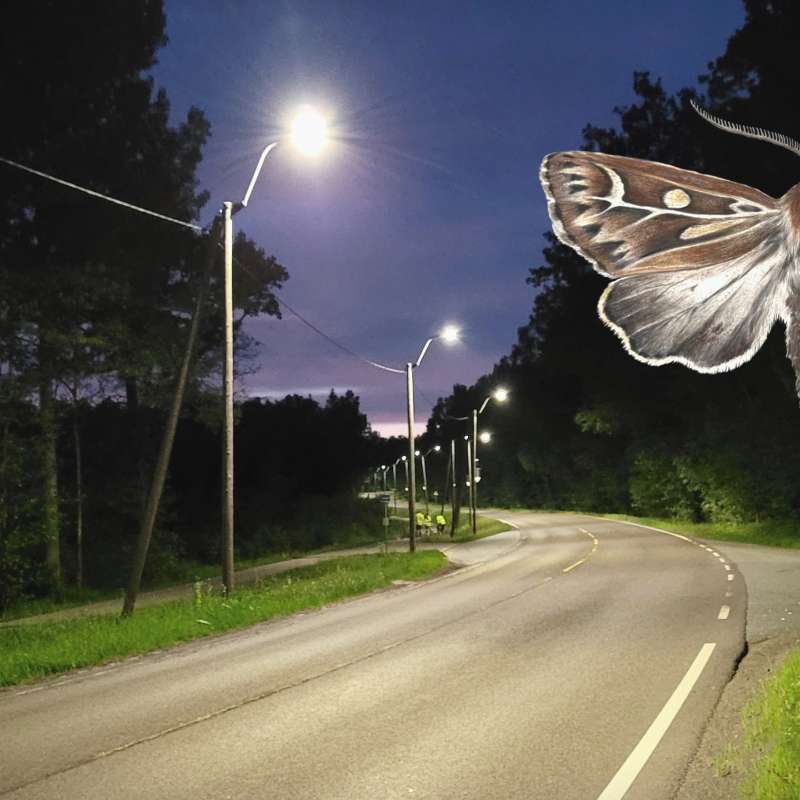Henrik Antzée-Hyllseth
Overingeniør
(+47) 476 56 534
henrik.antzee-hyllseth@nibio.no
Sted
Ås - Bygg H7
Besøksadresse
Høgskoleveien 7, 1433 Ås
Sammendrag
Det er ikke registrert sammendrag
Sammendrag
Dette overvåkings- og kartleggingsprogrammet er finansiert av Mattilsynet og arbeidet er utført av Norsk institutt for bioøkonomi (NIBIO) og Mattilsynet. Formålet er å så tidlig som mulig oppdage fremmede og skadelige trelevende insektarter (karanteneskadegjørere) som måtte ankomme Norge. Beredskapsdelen av prosjektet inkluderer et lett tilgjengelig lager av feller og kjemiske lokkemidler til bruk dersom karanteneskadegjørere skulle bli oppdaget. De ulike lokkemidlene som brukes i prosjektet tiltrekker seg biller i slektene Anoplophora og Agrilus, samt andre bark- og trelevende insektarter på EPPO (European and Mediterranean Plant Protection Organization) sine lister over karanteneskadegjørere. Sommeren 2024 ble seks lokkemidler testet i feller ved bruk av en fangstmetodikk etablert i 2021. Fellene var utplassert i skogområder nær åtte ulike virksomheter som var vurdert av Mattilsynet å ha forhøyet risiko for å introdusere fremmede arter. Ingen karanteneskadegjørere ble fanget.
Forfattere
Volkmar Timmermann Henrik Antzée-Hyllseth Isabella Børja Nicholas Clarke Jostein Gohli Paal Krokene Christian Kuehne Torstein Kvamme Helge Meissner Nina Elisabeth Nagy Ole Jakob Bae Næss Joyce Machado Nunes Romeiro Sverre Solberg Arvid Svensson Bjørn Økland Wenche AasSammendrag
Skog dekker nærmere 40 % av Norges landareal. Skogene bidrar til karbonbinding både over og under bakken, forsyner oss med råvarer, spiller en viktig rolle for friluftslivet og er leveområdet for utallige arter. Skogens viktige rolle som leverandør av slike økosystemtjenester forutsetter imidlertid et intakt skogøkosystem, en god skoghelse og en langsiktig og bærekraftig forvaltning. Skogens helsetilstand påvirkes i stor grad av klima og værforhold, enten direkte ved tørke, frost, snø og vind, eller indirekte ved at klimaet påvirker omfanget og spredningen av soppsykdommer og insektangrep. Klimaendringene og den forventede økningen i klimarelaterte skogskader gir store utfordringer for forvaltningen av framtidas skogressurser. Det samme gjør invaderende skadegjørere, både allerede etablerte arter og nye som kan komme til Norge i nær framtid. Uansett hvilke utfordringer skogen står overfor, er det viktig med langsiktige skogovervåkingsprogrammer for å kunne oppdage endringer og iverksette tiltak mot truslene. I denne rapporten presenteres resultater fra skogskadeovervåkingen i Norge i 2024 og trender over tid for følgende temaer: 1. Landsrepresentativ skogovervåking; 2. Intensiv skogovervåking; 3. Barkbilleovervåkingen 2024: Fortsatt høye fangster i stormrammede områder; 4. Overvåking av fremmede trelevende insekter; 5. Almesyken sprer seg til nye områder; 6. Overvåking av askas naturlige foryngelse i skog angrepet av askeskuddsyke; 7. Andre spesielle skogskader i 2024.

